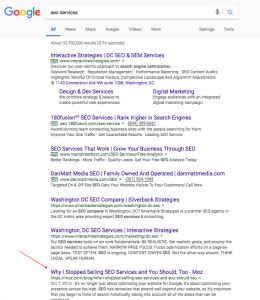— December 5, 2018

Free-Photos / Pixabay
Organizations invest substantial time and resources into identifying high-potential employees who are well-suited for leadership positions. But finding these candidates through leadership assessment is only the first step in a longer succession planning process. By taking steps to help these employees build the necessary skills and expertise they will need in the future, companies can minimize the disruptive effects of promotion and succession planning situations.
Here are a few ways to prepare high-potential employees for promotion:
Create a Professional Development Plan
Sometimes, high-potential employees aren’t sure about what steps they should take to reach their ultimate goals. Working with a manager or HR department to create a comprehensive professional development plan (PDP) can give them the much-needed focus and insight to understand how they can further their careers. A good PDP should outline strengths, expose areas of need, and identify the resources that can facilitate the employee’s development.
Since employees actively participate in putting the PDP together, the process gives them ownership over their career trajectory by establishing clear targets and breaking them into more manageable steps. By routinely assessing progress and adapting to changes or unexpected setbacks, high-potential employees can ensure that their development remains on track regardless of current circumstances.
Make Development Resources Readily Available
No matter how much potential an employee possesses, they’re not going to magically become a successful leader overnight. Without sufficient training and development as part of a talent management strategy, they will find it difficult to succeed in new positions if they lack vital skills they never had the opportunity to build in their previous positions.
Today’s organizations have the benefit of leveraging technology to deliver training programs in ways that are both convenient and cost-effective. Implementing these e-learning tools isn’t simply a matter of placing conventional training resources online in electronic format. Making resources like e-manuals and slide decks readily available is important, of course, but they will likely go unused unless they’re accompanied by more engaging educational tools.
Creative and interactive development resources like video simulations, gamification, and interactive scenarios can help provide high-potential employees with the skills they will need for success in leadership positions. And since virtual training programs can be broken up into smaller segments and completed 40-60% faster than traditional training methods, e-learning offers candidates tremendous flexibility that allows them to integrate development process into their everyday schedule.
Provide Mentoring Opportunities
One of the best ways to give high-potential employees a taste of what they may encounter in future leadership positions is to match them with a mentor who is already in a leadership role. This not only has the benefit of exposing them to an experienced leader’s institutional knowledge, but also helps to create a sense of continuity throughout the organization. The mentorship allows people to become familiar with potential candidates and see for themselves that the person is prepared for their future role.
A good mentor should not only possess the skills and experiences that match a employee’s needs, but also a commitment to the mentorship process. They must have a reputation for integrity and show a willingness to put in the additional work necessary to pass along the leadership insights they’ve picked up over the years. In some cases, mentors will be grooming their eventual replacements, but even if they work in a different department, there are still valuable insights they can pass on to potential leaders as part of a broader talent management and promotion strategy.
Implement Coaching
Coaching programs have become popular in recent years, largely due to their significant return on investment (well over 300% for individual-focused coaching and up to 5000% for the executive level). A more targeted solution than partnering employees with a mentor, coaching is effective at identifying potential difficulties and helping candidates understand the responsibilities they will face as leaders. Paired with other learning tools, directed coaching can greatly improve the effectiveness of a leadership development program.
The best coaching programs are focused on developing flexible leaders, emphasizing the skills that improve situational awareness and identify ways to better motivate employees. While a mentor is more focused on transferring institutional knowledge and emphasizes strategies for building relationships, coaches take a more direct, educational approach to leadership, helping candidates to better understand the tools and resources at their disposal.
Organizations need to take careful steps to prepare high-potential employees for future promotions. By offering more versatile training and matching candidates with more experienced employees who can help them develop leadership skills, companies can prepare their next generation of leaders to move into new positions as seamlessly as possible with minimal disruption in business operations.
Business & Finance Articles on Business 2 Community
(39)
Report Post





